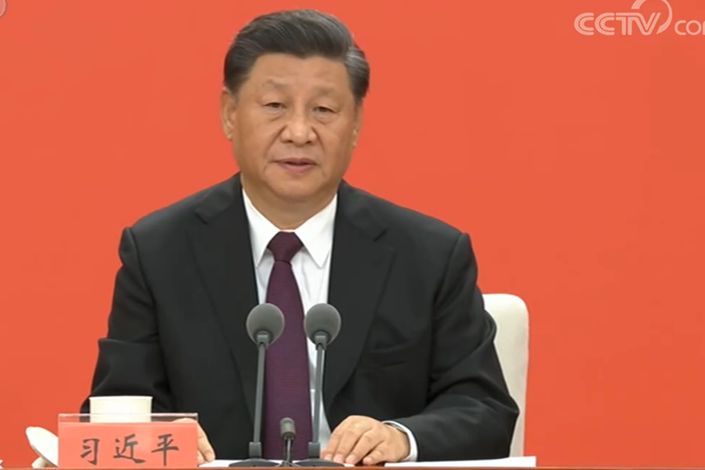Key Takeaways From Xi Jinping’s Shenzhen Remarks

President Xi Jinping spoke Wednesday at a grand gathering in the city of Shenzhen in southern Guangdong province, celebrating the 40th anniversary of the establishment of the Shenzhen Special Economic Zone.
In the hour-long speech, Xi urged colleagues and cadres to advance the country's reform agenda with “greater political courage and wisdom” amid “unprecedented challenges” and to build an innovation-driven economy as a “fundamental way out” of rising global competitive pressure.
Here are key excerpts from the speech, edited and compiled according to simultaneous interpretations provided by the state-owned broadcaster CGTN. The official English text has not been released. Read the full Chinese version here.
Shenzhen’s ‘historical mission’
Shenzhen is to build itself into a pilot demonstration area of socialism with Chinese characteristics and to become a model city of a great modern socialist country. Shenzhen should enhance its capacity level in implementing new-development concept and persist in deepening reform comprehensively and expand opening-up unswervingly. Shenzhen should also promote the development of the Guangdong-Hong Kong-Macao Greater Bay Area and enrich the new practice of “One country, Two systems.”
Shenzhen will also take the lead to realize socialist modernization. This is the historical mission of Shenzhen given by the CPC Central Committee in the new era.
Innovation-driven economy
The Guangdong and Shenzhen economy is comparatively developed and hence faces more restrictions on resources, factors and greater pressure of global competition in technology, talent, and others.
Therefore, the implementation of the new development concept for high quality development is a fundamental way out. Development is our primary task; talent is our number one resource; and innovation is the top driving force.
We should deploy innovation chains according to industrial chains and align industrial chains with innovation chains. We should plan in advance strategic emerging industries, cultivate future industries, and develop a digital economy. We should increase the input in basic research and applied basic research and give full play to Shenzhen’s advantage in industrial-academic research synergy to take the initiative in integrating the global innovation network.
We will implement a more-open talent policy to attract world-class strategic science and technology talent, leading science and technology talent, youth science and technology talent, and high-level innovation talent teams to leverage global brain power.
Comprehensive reforms
Currently, reform is at a new historical juncture, with many unprecedented challenges emerging. So the complexity, sensitivity and difficulty of pushing forward reform are no smaller than four decades ago.
Therefore, we must ― with greater political courage and wisdom ― stick to the combination of crossing the river while filling the stones and strengthening top-level design. We will deepen reform in crucial areas and key links with the right timing. We will pay more attention to the systematic, holistic, and coordinated effects of the reform.
We need to stick to supply-side structural reform as a major component to leverage resources of production, distribution, circulation, and consumption in the domestic market. We need to improve the supply system’s compatibility for domestic demand so that we could meet the growing needs of the domestic market with high quality.
‘Dual circulation’ strategy
Currently, the world economy is confronted with complicated challenges. By no means should we be stopped by the reversing trends and ties. We should choose the right side of history to unswervingly further open up in a comprehensive manner. Press ahead with developing an open world economy and push forward the building of the community of a shared future for mankind.
The new development pattern is not a closed domestic cycle, but an open domestic and international dual cycle. We should optimize and upgrade our production, distribution, circulation, and consumption systems. We should strengthen domestic economic connections, enhance economic intensity, improve and smooth the capabilities of the domestic cycle of circulation, and connect the international and domestic dual cycle.
Contact reporter Lu Zhenhua (zhenhualu@caixin.com) and editor Bob Simison (bobsimison@caixin.com)
Support quality journalism in China. Subscribe to Caixin Global starting at $0.99.

- MOST POPULAR





